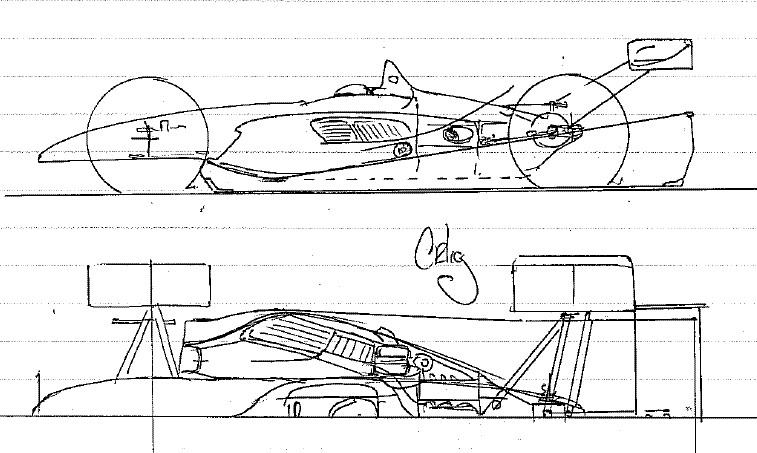I think we all agree the best starting point for power and down force is a turbo ground effect car.
Taking the aero first the tunnels should be as long as possible and as uninterrupted, a raised nose will be required to clear the under floor inlet, then the floor will coke bottle out between the front wheels and backing again between the rears. The on protuberances into the under floor will be the driver bum, the engines sump and the gearbox. As a result a very narrow engine angle will be required to get the exhaust outlets clear of the roof of the tunnels. Only a small rear wing will be required to trim the car at speed, this could be actively controlled as the CofP moves forward at speed, no front wing will be required. No Fan will be required as the motion of the car will generate more than enough down force.
The engine should be a V configuration with at least a pair of turbochargers feeding the inlets plenums through intercoolers. Plus large radiators to shed the engines heat. These would be fitted into small “sidepod” mouldings on top of the ground effect tunnels. Gearbox would need to have a lot of rations seven at least or even eight to cope with the turbos explosive power band, as would drivers’ aids for traction and yaw.
Chassis wise a stiff carbon moulding with a cockpit as enclosed as possible to reduce aero losses and increase stiffness, I’ve kept the 2005 regulation cockpit padding for the obvious safety reasons. Suspension via double carbon wishbones and pushrods all round, the rear wishbones will need to be raised to clear the tunnels, so the top wishbone needs to be raised above the gearbox (McLaren style). Active control would be beneficial to keep the skirts in contact with the ground and keep the ride height level at rising speeds.


